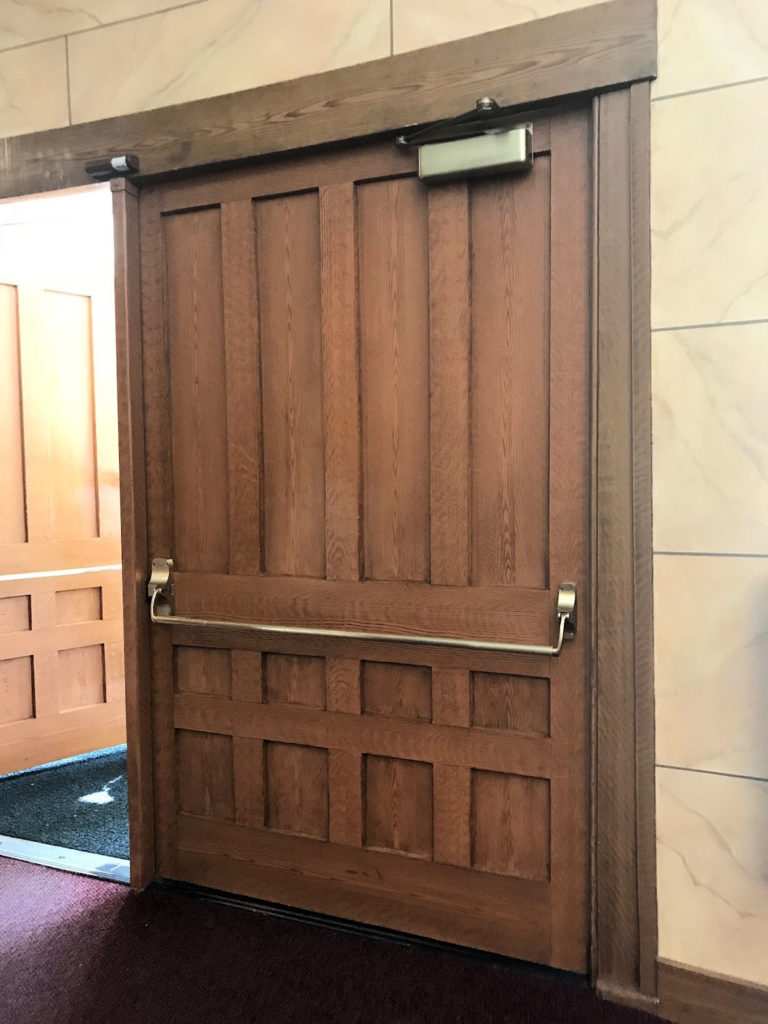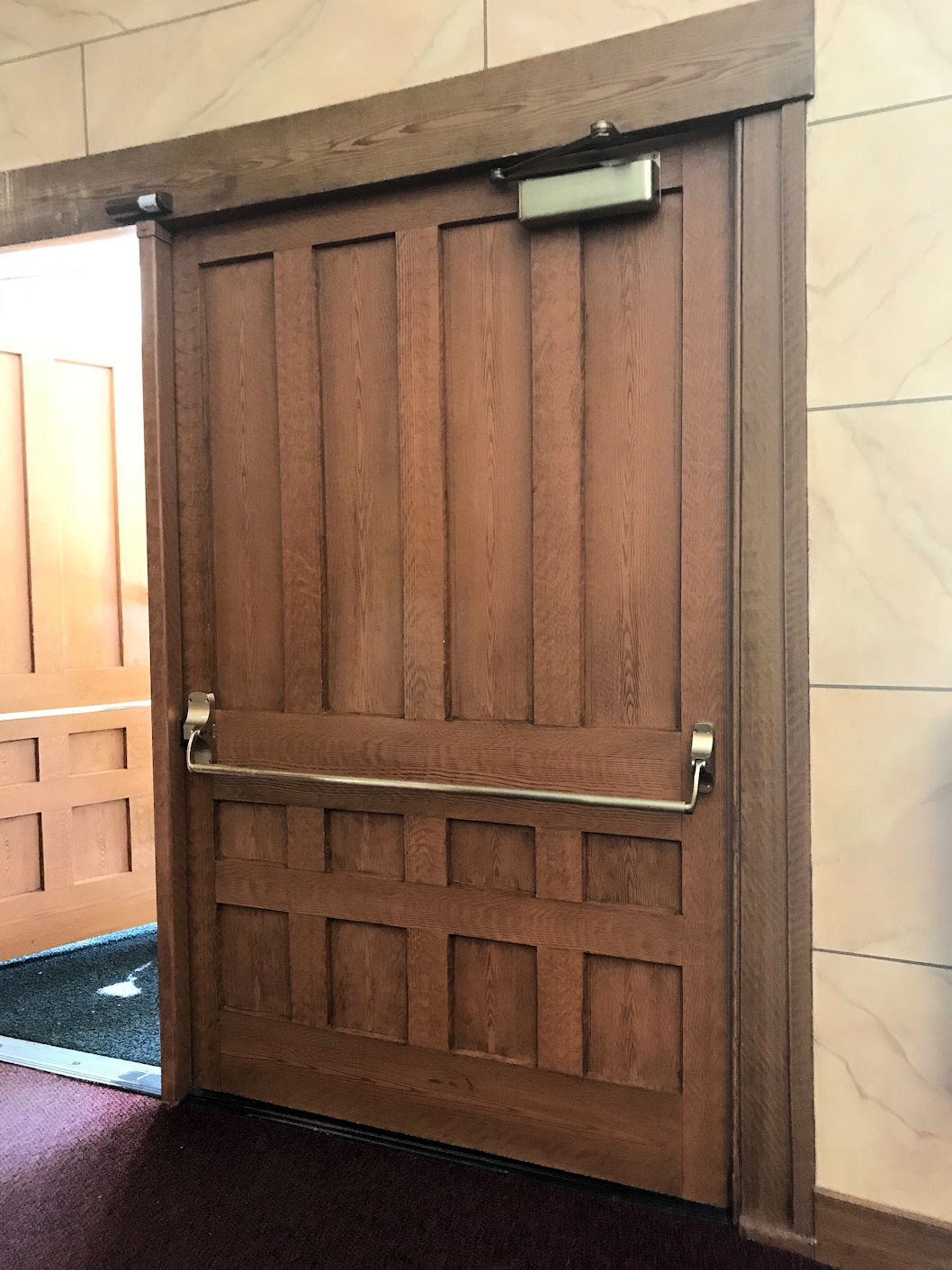 One of the difficulties of staying on top of the code requirements is that just when you think you know the answer – the codes change. if you’ve taken any code classes or spent time reading code books (who does that?!) you may have seen that along with a minimum clear opening width, there is also a maximum door width.
One of the difficulties of staying on top of the code requirements is that just when you think you know the answer – the codes change. if you’ve taken any code classes or spent time reading code books (who does that?!) you may have seen that along with a minimum clear opening width, there is also a maximum door width.
Ann Timme of Allegion sent me this photo the other day and it reminded me to tell you about a potential change to the International Building Code (IBC). Currently, the IBC says, “The maximum width of a swinging door leaf shall be 48 inches (1219 mm) nominal.” NFPA 101 also included this limitation in past editions but it has been removed.
A code change proposal has been submitted for the 2021 IBC, which would remove the maximum width criteria from that publication as well (if it receives final approval). According to the IBC Commentary, the limitation exists is “because larger doors are difficult to handle and are of sizes that typically are not fire tested.” However, the opening force requirements stated in the code will ensure that the doors are not too difficult to open, regardless of the width. It’s not often that a wide door would be used in a location where a fire door assembly is required, but if a fire door of the desired width has not been tested, it’s possible that a code official would allow a construction label to be used.
A few things to note about the doors in the photo…
a) Most touchpad style panic hardware would not have an actuating portion wide enough to measure half the width of the door, but the crossbar device does meet this requirement.
b) It’s important to make sure that the door closer has enough closing force to reliably close and latch the door, but still meets the opening force limitations.
c) The hinges on a wide door need to be able to compensate for the weight of the door and the distance from the jamb to the lock edge. I have seen some wide doors with wheels to keep them from dragging, but I don’t recommend this application.
Seen any interesting doors lately? Send me some photos!
You need to login or register to bookmark/favorite this content.






This does not meet ADA criteria, does it?
In what sense?
– Lori
A few years ago one of our new Elementary schools had 4 foot wide gypsum filled Fire Rated doors in the exit stairwells. Within six months one of the doors came apart. We were shocked to find that these slab doors only had 3/4″ of wood around the perimeter holding things together. The hinges held up fine but the rest of the door fell away from the hinge stile. They must have weighed over 200 pounds.
The manufacturer supplied a replacement door which lasted a grand total of two months. We ended up replacing it with a suitably rated steel door and have no problems in the five years since.
In the meantime we have made arrangements with our facilities planning department to review specifications before unsuitable product is installed.
Coincidentally, check out today’s post! It doesn’t look like a wide door, but the hinge stile certainly has problems!
– Lori
I’d say the architect was forward looking….given the current obesity trends.
The wider the door the more it can conflict with uneven floors. That little wheel idea demands floors more level than most.
Also, the wider the door the more wind will catch it. This raises issues for the closer and any stop.
I would like any recommendations for this one. We received a request to modify a swinging door pair (center pivot doors outswing 36″ width, total 72″ width x 96″ height, exterior door) the change involves a door leaf 62″ width x 96″ height, top and bottom rail rails 1/2″ TG. The center pivot point is 20″ offset from the heel edge. Question, if the leaf protrudes this far back into the vestibule, if there any code requirement for this projection? My concern is entrapment at the heel edge pivot point as the door is closing. We have a manual hydraulic closer or an in ground automatic operator controlling this custom application. WWYD? As always, Best to you Lori and Kind Regards, Wolfe
[…] https://idighardware.com/2018/06/maximum-door-width/ […]